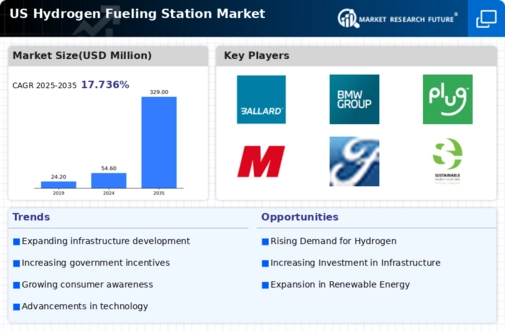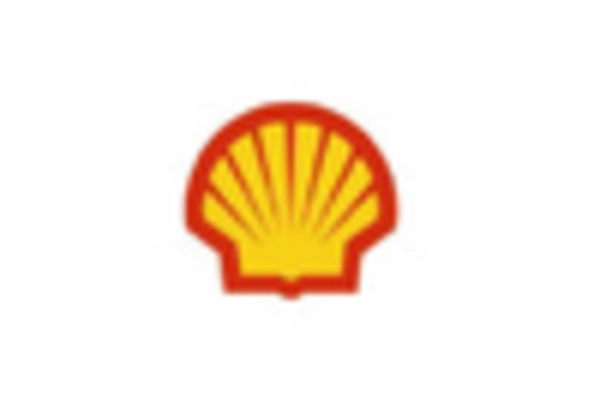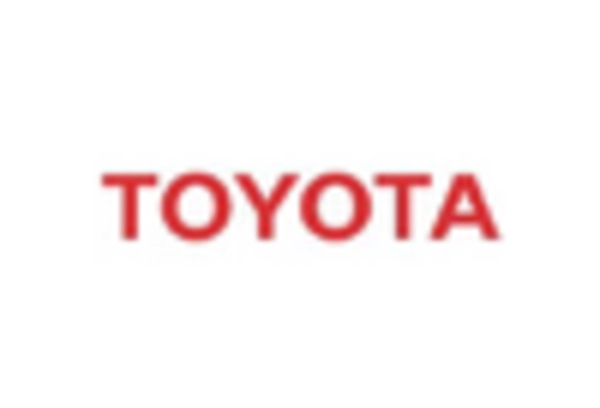Supportive Regulatory Frameworks
Supportive regulatory frameworks are essential for the growth of the hydrogen fueling-station market. The US government has implemented various policies aimed at promoting hydrogen as a clean energy source. Incentives such as tax credits and grants for hydrogen infrastructure development are encouraging private investments. Additionally, states like California have established ambitious targets for hydrogen fueling stations, aiming for over 200 stations by 2025. This regulatory support not only fosters a conducive environment for the hydrogen fueling-station market but also instills confidence among investors and stakeholders, facilitating the expansion of hydrogen infrastructure across the nation.
Investment in Hydrogen Infrastructure
Investment in hydrogen infrastructure is a critical driver for the hydrogen fueling-station market. With the US government and private sector increasingly recognizing the potential of hydrogen as a clean energy carrier, funding for hydrogen projects has surged. In 2025, federal funding for hydrogen initiatives is projected to exceed $1 billion, aimed at developing a comprehensive network of fueling stations. This financial commitment is likely to catalyze the establishment of new hydrogen fueling stations across the country, enhancing accessibility for consumers. The hydrogen fueling-station market stands to gain significantly from these investments, as they facilitate the growth of a robust infrastructure that supports the adoption of hydrogen technologies.
Rising Demand for Clean Energy Solutions
The hydrogen fueling-station market is experiencing a notable surge in demand driven by the increasing consumer preference for clean energy solutions. As environmental concerns escalate, more individuals and businesses are seeking alternatives to fossil fuels. This shift is reflected in the growing number of hydrogen fuel cell vehicles (FCVs) on the road, which reached approximately 50,000 units in the US by 2025. The hydrogen fueling-station market is poised to benefit from this trend, as more stations are required to support the expanding fleet of FCVs. Furthermore, the transition towards zero-emission vehicles aligns with state and federal regulations aimed at reducing greenhouse gas emissions, thereby creating a favorable environment for investment in hydrogen infrastructure.
Collaboration Between Public and Private Sectors
Collaboration between public and private sectors is emerging as a pivotal driver for the hydrogen fueling-station market. Partnerships between government entities and private companies are fostering innovation and accelerating the deployment of hydrogen infrastructure. For example, several states have initiated joint ventures with private firms to establish hydrogen fueling stations, leveraging shared resources and expertise. This collaborative approach is likely to enhance the efficiency of project execution and reduce costs associated with infrastructure development. The hydrogen fueling-station market is expected to benefit from these synergies, as they promote a more integrated and comprehensive approach to building a sustainable hydrogen economy.
Technological Innovations in Hydrogen Production
Technological innovations in hydrogen production are shaping the hydrogen fueling-station market. Advances in electrolysis and steam methane reforming are making hydrogen production more efficient and cost-effective. For instance, the cost of producing hydrogen via electrolysis has decreased by approximately 30% over the past few years, making it a more viable option for fueling stations. These innovations not only lower production costs but also enhance the sustainability of hydrogen as a fuel source. As the hydrogen fueling-station market evolves, the integration of these technologies is expected to improve the overall efficiency and reliability of hydrogen supply, thereby attracting more consumers and businesses to adopt hydrogen fuel.

















Leave a Comment